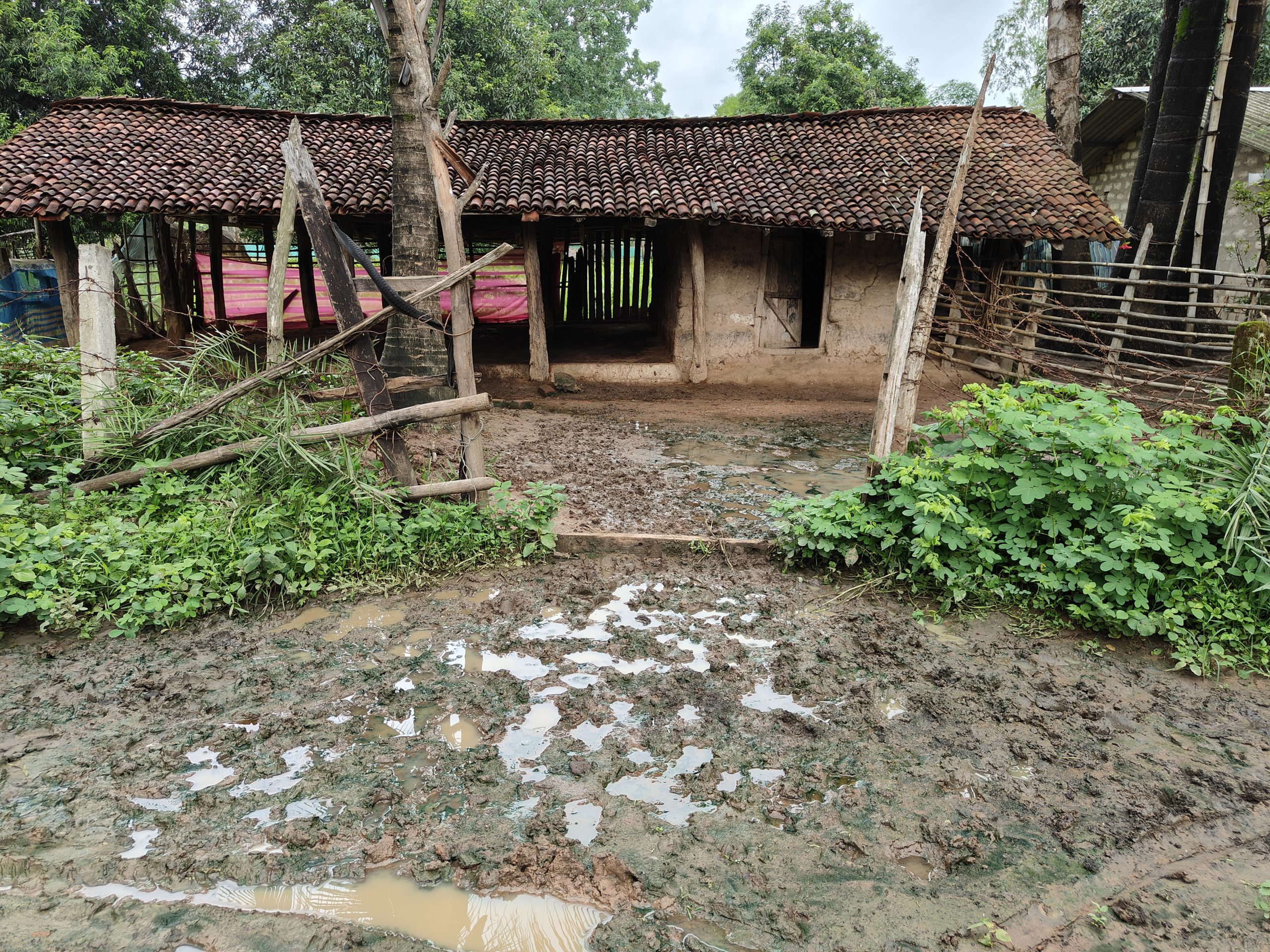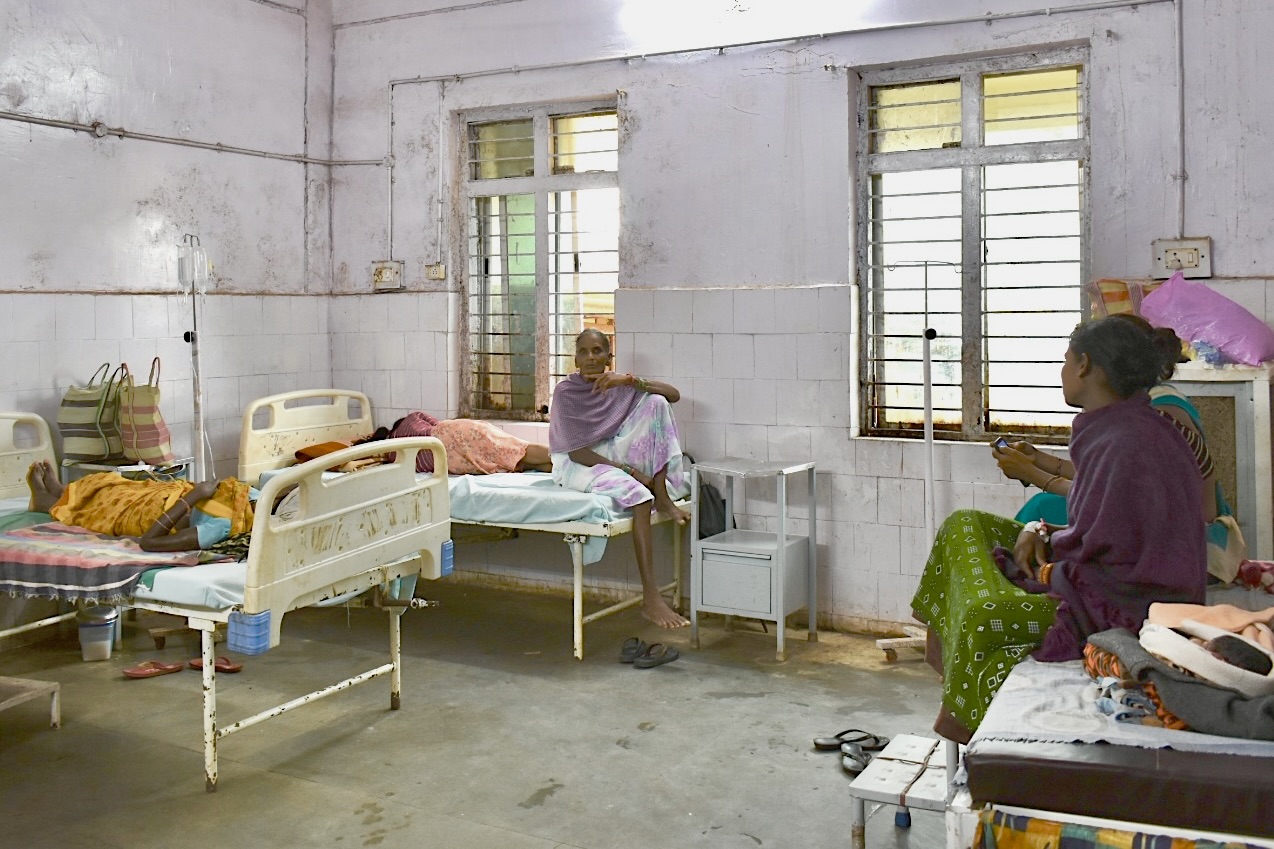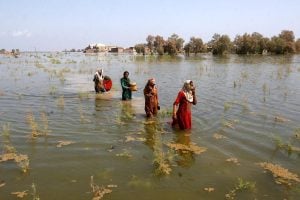In 1994, Manvati Nag, an Indigenous woman from Bijapur district in the central Indian state of Chhattisgarh, married and relocated to the village of Halbaras in forested Dantewada district in the east. Though the move was only about 80 kilometres, the life of Nag, then only 19, changed drastically. Never having fallen seriously ill in her parents’ home, she contracted malaria repeatedly in her new home: “once every year or two”, she estimates.
Malaria is a vector-borne disease caused by Plasmodium parasites, and is transmitted through bites from infected female Anopheles mosquitoes. The primary strains, Plasmodium falciparum (Pf) and Plasmodium vivax (Pv), are unevenly distributed in India, with Pf being more lethal and prevalent in densely forested and tribal areas like Chhattisgarh, accounting for over half of the malaria cases.
In recent years, the recurring malaria has only gotten worse for Nag. Since 2022, “I have been contracting the disease almost every three months, whether it is summer, monsoon or winter”, she notes.
Nag and others who live in India’s forested areas represent an anomaly: while the rest of the country trends downwards in malaria cases, these areas are projected to have malaria cases increase.
An increase in extreme rainfall may be a driving factor. In 2023, the World Health Organization’s (WHO) World Malaria Report included a chapter on climate change impacts and disease management for the first time. It cited the example of Pakistan: after the country experienced massive floods in 2022, its malaria caseload increased fivefold due to stagnant pools of flood water where mosquitoes breed.
Tree canopies combined with the hot and humid conditions in India’s forested areas, which include large tracts in states like Chhattisgarh, are also a conducive environment for stagnant rainwater to collect. And heavy rainfall days are increasing in India. A 2024 study by the Council on Energy, Environment and Water, a think tank, revealed that between 2012 and 2022, 55% of India’s sub-districts (tehsils) experienced an increase in days of heavy rainfall during the early period of the monsoon – during which there is more rainfall – compared to the 1982-2011 period. This increase in erratic rainfall patterns has been attributed to climate change.
Warmer air holds more water, and as the planet heats up, this means there are longer periods of dry days, as well as an increase in shorter periods of heavy rainfall. This increase in heavy rainfall days could undermine India’s efforts – particularly in its vulnerable forested areas – to eradicate malaria.
Climate change and India’s malaria challenge
India has made remarkable progress in recent years: in 2022, there was a 30% reduction in new malaria cases and 34% fewer deaths compared to 2021, despite the global trend of cases increasing.
The country accounted for just 1.7% of global malaria cases in 2020 and aims to achieve malaria-free status by 2030. But in its own region – defined as South-East Asia by the World Health Organisation – India still has the most cases, with 66% of the malaria burden in 2022. The country’s forested areas are a significant contributor: in 2019, these populations accounted for 21% of malaria cases and 53% of deaths, despite representing less than 7% of the country’s population.
Chhattisgarh state, where Nag lives, has one of the highest areas of forest cover in India. It has vied with Orissa – another heavily forested state – for the most cases of malaria in the country since 2020, and accounted for the most malaria deaths except in 2022, when the state of Maharashtra had a few more. In 2020, seven forested districts in Chhattisgarh, including Nag’s district of Dantewada, accounted for about 83% of the state’s malaria cases.
In Mizoram, the state with the highest percentage of forest cover, a 2023 study showed that malaria cases have increased in recent years, against the national trend, and are projected to rise further. In west Mizoram there has been an estimated 34 mm annual increase in rainfall over the last three decades, with the increase being marked from 2015 onwards. “If the increase in rainfall is also characterised by [higher frequency], it could lead to rapid expansion of [number of] mosquitoes,” the study noted.
Meanwhile, a 2022 study found that in the state of Odisha, predictions for 2020s, 2050s and 2080s show that the intensity of malaria transmission in the state as a whole will experience a 5%, 13%, and 15% decrease respectively, but will rise by 10-30% in “forested and high-elevated districts with remote rural tribal settlements” by the end of the century.
“Malaria is a climate-sensitive disease and its transmission is heavily affected by any change in temperature, humidity and rainfall,” explains Kaushik Sarkar, a doctor and director of the Institute for Health Modelling and Climate Solutions.
Forest populations and pregnant women are more vulnerable
People living in forested areas often face additional challenges exacerbating their battle with malaria, such as poverty, malnutrition, and inadequate medical infrastructure, notes the WHO report, making them particularly vulnerable.
Undeveloped healthcare systems make detection of malaria difficult in such areas, leading to lack of treatment for the disease. For her latest bout of malaria, Nag was treated with Artemisinin Combination Therapy and a dose of Primaquine – the first-line and highly effective treatment of the disease – from Arunlata Chandravanshi, a health worker in her village, who suspects the malaria parasite may still be in Nag’s bloodstream. “We are seeing quite a few such cases of relapse where the malaria parasites are not cleared properly, and the patient keeps contracting the disease again,” she says.
An increase in malaria cases is particularly concerning for pregnant women, who are three times more likely to develop severe diseases compared to non-pregnant women. Babies born of malaria-infected women are more than twice as likely to be underweight at birth.
Details on malaria-specific causes are scarce, but India’s forested areas have the highest all-cause maternal mortality rates during and after pregnancy. As climate impacts worsen, there is fear that the lives of even more mothers and their babies will be at risk.
In late July, Hemlata Nayak from the village of Gayata, just 15 minutes away from Halbaras, spiked a fever while seven months pregnant with her first child. Concerned for her health, she attempted to seek medical care. The ongoing rain, however, delayed her visit to the nearby Community Health Centre, which is only 2 miles away, by two days due to the lack of availability of an ambulance.
Nayak was lucky to receive antimalarial treatment promptly upon reaching the hospital. But delayed treatment can lead to severe complications, including, iron deficiency, and blackwater fever – a severe condition that causes jaundice, fever, and dangerously low levels of essential vitamins.
Malaria-endemic states like Chhattisgarh and Odisha have their own targeted initiatives in place to detect and treat cases. For example, Chhattisgarh runs its own Malaria Elimination Programme, which employs primary healthcare workers to carry out door-to-door testing during peak seasons. They also conduct tests following erratic rainfall in any unusual month to detect cases early and provide treatment, while also distributing bed nets and raising awareness about prevention measures. Similarly, Odisha has its flagship Durgama Anchalare Malaria Nirakaran (DAMaN) programme, which focuses on mass testing, treatment, and distribution of bed nets.
Beyond programmes, however, experts say it will be crucial to understand the spread of malaria in more remote areas. “There is still a lot to do to fully understand the burden of malaria cases, as India is a vast country with diverse geographic variations, and the marginalised Indigenous communities living in these regions are generally scattered”, and accessibility is a big challenge, says PK Sen, former Director of the National Vector Borne Disease Control Programme and Principal Advisor to the Ministry of Health and Family Welfare.
“India’s success in eliminating the disease will largely hinge on its ability to unlock the power of data to better understand the disease in the tropical and temperate regions in central, eastern, and north-eastern India,” says Sarkar.
Meanwhile, Nayak, who was advised to undergo an ultrasound to check the condition of her foetus following her treatment, has been waiting for the rain to stop for a week. “If I am suffering this much [from the effects of malaria], I can’t even imagine what might be happening to my baby,” she says.










